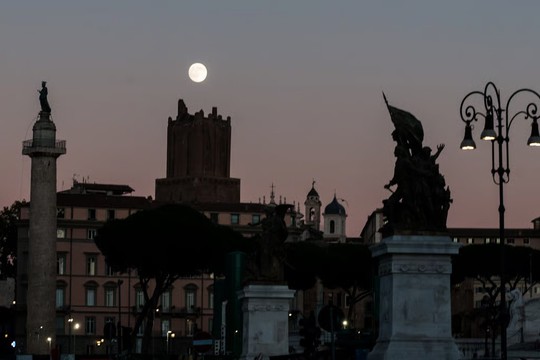Tourism across the continent is still booming, of course, but the millions chasing their Instagram-able escapes aren’t enough to offset stagnation, and also bring costs.
Photo: NurPhoto via Getty
In the late 1400s, Italy was the jewel of Europe. Venice ruled the seas; Florence dominated art and finance; and Milan led in trade and technology. No corner of the Western world was more advanced. Yet, within decades, both its political independence and economic primacy were gone.
Europe today risks a similar fate, POLITICO stresses.
Once the envy of the world, the bloc’s lead has eroded. The EU isn’t just politically divided, it’s also falling behind in industries that will define the rest of this century. Young talent is fleeing for the U.S. and Asia, while its economy increasingly resembles an open-air museum of past achievements.
Whether in growth, technology, industry or living standards, Europe is in jeopardy of becoming a province in a world defined by others. And it stands to learn from Italy’s decline.
The warning signs are unmistakable: Since 2008, the EU’s GDP expanded by just 18 percent, while the U.S. grew twice as fast and China grew nearly three times bigger. Tourism across the continent is still booming, of course, but the millions chasing their Instagram-able escapes aren’t enough to offset stagnation.
The bloc’s fall in living standards echoes Renaissance Italy as well. Around 1450, Italy’s income per person was 50 percent higher than Holland’s. A century later, the Dutch were 15 percent richer, and by 1650, they were nearly twice as rich.
Modern Europe is slipping even faster than that. In 1995, Germany’s GDP per capita was 10 percent higher than America’s, whereas today, the U.S. is 60 percent higher. At this pace, Germany’s prosperity levels could shrink to a third of its transatlantic partner’s within a generation.
Much like in Renaissance Italy, this economic malaise reflects a deep technology gap. Once the queen of the seas, Venice clung to old technology and paid the price. Its galleys, superb in calm Mediterranean waters, were no match for the ocean-going caravels that carried Spain and Portugal across the world.
Traditional industries are faltering too. Taken together, Germany’s top three carmakers are worth just an eighth of Tesla. Ericsson and Nokia, once world leaders in mobile network technology, lag behind Asian rivals in 5G. And France’s Arianespace, once dominant in satellite launches, now hitches rides on tech billionaire Elon Musk’s rockets.
The problem isn’t invention, though — it’s scale. Despite its top engineers and universities, nearly 30 percent of the bloc’s unicorns have transferred to the U.S. since 2008, taking its most entrepreneurial spirits with them. It seems the continent sparks ideas, while America fuels them and profits — yet another pattern that mirrors Italy, which supplied talent as others built empires. Its greatest explorers like Columbus, Cabot, Vespucci and Verrazzano had also trained at home, only to sail under foreign flags.
The fundamental issue in both cases is political. Like Italy’s warring city-states in the 1500s, today’s Europe is divided and feeble. Capitals quarrel over energy, debt, migration and industrial policy; a common defense strategy remains only an aspiration; and ambitious plans for joint technology spending or deeper capital markets get drowned in debate.
This disunity is what doomed Italy as it fell prey to foreign powers that eventually carved up the peninsula. And the bloc’s current divisions leave it similarly vulnerable to global competitors, as Washington dictates defense; Russia menaces the continent’s east; China dominates supply chains; and Silicon Valley rules the digital economy.

But is this all fated? Not necessarily.
The EU has built institutions Renaissance Italy could never have dreamed of: a single market, a currency, a parliament. It still hosts world-class research institutions and excels in advanced manufacturing, pharmaceuticals, aerospace, green energy and design. The continent can still lead — but only if it acts.
Sixteenth-century Italy had no such chance. Geography trapped it in the Mediterranean while trade routes shifted to the Atlantic, and commerce stagnated. New naval technologies left its fleets behind, and its brightest minds sought their fortunes abroad. But Europe faces no such limit.
Nothing is stopping it other than its own political timidity and fractiousness.
Europeans can either wake up or resign themselves to becoming a continent of monuments and echoing memories.
read more in our Telegram-channel https://t.me/The_International_Affairs

 10:07 15.11.2025 •
10:07 15.11.2025 •























